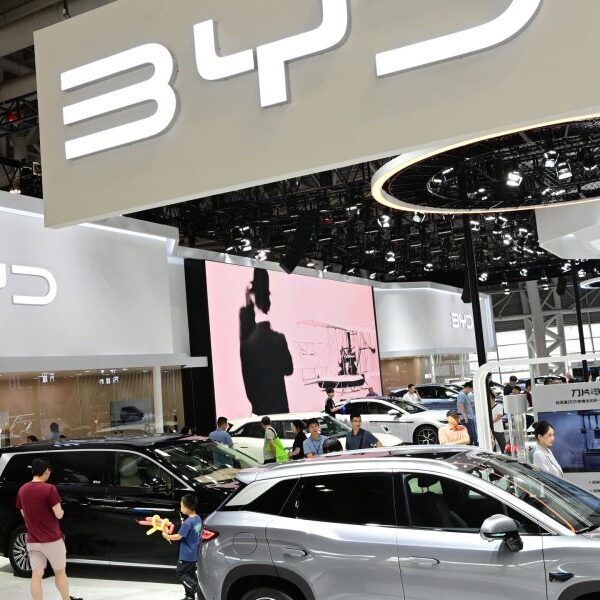da-kuk
Market Overview
The first half was disappointing for White Brook Capital. While the S&P 500 (SP500, SPX) hit new highs, small and mid capitalization companies that White Brook Capital Partners exclusively invests in were flat. Within that categorization, our concentration in Builders First Source (BLDR), Green Plains (GPRE) and Afya Ltd (AFYA) which have declined year to date hurt performance, as did our reluctance to buy high priced stocks and companies with economic models that are unlikely to produce the level of cash flow demanded by their price. Relative performance has started to reverse in July.
During the first half and much of last year, enthusiasm for artificial intelligence was so great that as of the end of the quarter, Nvidia (NVDA), Google (GOOG,GOOGL) , Microsoft (MSFT), and Apple (AAPL) were individually worth more than the combined market capitalizations of all the public companies in the Russell 2000 (RTY), and any two are worth more than the market caps of all the companies trading in France (~3.1 trn) and England (~$2.7 trn). This is interesting because market caps are a direct reflection (when combined with debt) of market participants’ estimation of the value of companies’ cumulative free cash flow over their lifetime. We find it unlikely that any of the companies listed will produce more cash flow than all of the public companies in either of those countries or all of the public companies currently in the Russell 2000. Something has to give.
For fans of rationality, there is reason for optimism. Thought leaders are beginning to question whether the large language model technology that the current generation of artificial intelligences are based on, is the right approach. At White Brook, we find it hard to treat AI hallucination as a “feature” rather than a bug (and if we’re wrong, we think a lot more 6-12 year olds should be working white collar jobs) and therefore have been skeptical of the fortunes of the industry given the current approach. It’s been uncomfortable being “anti-technologist” this cycle. I made my first 6x investment in a semiconductor company that endured years of losses investing in technology to make wireless charging transmitters and developing the interface for DDR5 RAM to work with telecom towers and data centers. Esoteric, growthy, and high tech investing are a core competency for White Brook Capital. But price matters and there are other areas of the economy that are breathtakingly cheap, whose future is positive, that should see significant cash flow in the near term and be wonderful investments.
More broadly, I am relatively optimistic about the direction of the economy. The economy is slowing, but is not in a recession. Many of the factors that drove inflation have faded, with deflation taking hold in large durable goods, consumer goods, and food. The labor market is less robust than it was, while still healthy, and the new home market has slowed considerably, with price growth now more accurately reflecting the local geography’s supply and demand. The July 11th CPI report which reported widespread slowing of inflation bolstered the case for the Federal Reserve to cut short term interest rates at the September meeting, with the markets now predicting a certainty of 1 cut and analysts speculating on as much as 3 cuts between the end of 2024 and early 2025. This was welcome news for our portfolio as a whole, but significantly so for our largest positions and largest losers YTD. The S&P 500 was down on the 11th, while the Russell 2000 small cap index was up over 3%. On the 12th, the Russell 2000 outpaced the S&P 500 again, the trend has continued through the publishing of this commentary. It’s far too early to say if this is the beginning of a new trend or a short term reversal, but small caps to our mind are grossly undervalued and underfollowed, and our portfolio even more so. We own a portfolio of companies where the base case for most is that they double in value from current levels. Each piece of new economic data through July 16th has bolstered that argument and the portfolio has performed as hoped given, the reality we’ve always believed, and is beginning to be revealed by data. Most of our portfolio reports in early August, so we’ll know more about the fundamental performance of the companies in the portfolio then.
Portfolio Review
Despite performance lags on Builders First Source (BLDR), Green Plains (GPRE) and Afya Ltd (AFYA), reevaluation of the companies, investment theses and valuations reflects upside for the back half and beyond.
Builders First Source has suffered so far this year due to elevated mortgage rates that have dramatically weakened demand for new homes and renovations. The White Brook Insights piece published on housing the week of July 1st, is a good overview of the industry thesis on Builders First Source. In short, while the 2Q earnings report could be negative, I believe building will resume as the 30 year mortgage rate falls to less than 6.75% and the stock will perform well from here over the next 3 to 5 years as housing supply must still catch up with demand and require new homes to be built.
Green Plains has suffered from investor mismanagement, but appears to have found discipline in recent weeks. At an investor conference during the 2nd quarter, the Company created unnecessary uncertainty around timelines and economics for various efforts, and spoke carelessly about future plans. Two of the timelines they seemingly pushed out, they were able to execute on time, late in June/early July, and their base business has become much more profitable late in the second quarter. Corn is now unusually cheap across the futures curve and they should be able to ensure their operating costs are low, well into next year. This is extremely supportive for the business. But Green Plains committed several gaffes including mentioning that the advantage of a standalone company was the ability to issue stock – during a time when the company has a standstill agreement with an activist investor while it runs a strategic review process. Finally, the EPA passed rule making that was ultimately neutral for the company, but created confusion, and pushed out other rule making that will impact the company at the periphery, but creates uncertainty for other players in the industry. Our view continues to be that in a year, Green Plains’ economic model will be strong, the stock is cheap, and that the expiration of the standstill agreement will result in either a new management team and/or the sale of the company at a much higher price in the second half of 2024, or early 2025.
Afya stock price has suffered this year from reasons that aren’t entirely clear. The business continues to execute well, Brazilian policy continues to be supportive of growth in the short, medium, and long term, and the Bertelesmann family continues to increase its stake, now at ~70% of shares outstanding. Importantly the Bertelsmann family bought⅓of the co-founder’s class B stock, and ½ of the class A shares held by the founding family for $180mm on July 2nd. I believe the Bertelsmann family intends to take Afya private as the needs of the founding Esteves family and the cash flow of the Bertelsmann family office dictate. The Brazilian Reais has been weak this year, but the stock’s decline is not commensurate with FX weakness and I believe the stock’s weakness will be relatively short lived. Afya’s stock too has been a beneficiary of the recent US economic data and interest rate cut speculation over the past few days.
White Brook is attempting to increase the frequency of communication with you, our investors, through the White Brook Capital Insights feed to give greater transparency into the Portfolio during this frustrating period. My priority in White Brook’s quarterly commentaries has been to inform as accurately, but succinctly as possible while giving a flavor of our analysis backing our investment theses. By more heavily using the White Brook Capital Insights feed, we should be able to do more. Without weighing on the length of these quarterly commentaries, it gives you the option to read more into our analyses and better understand our theses or related topics. By separating the two, the analyses can travel further, and hopefully that larger audience can come to see things the same way we do. In small and mid capitalization stocks, half the battle is getting investors to care, the other half is showing them the value. Management teams appear to see some value in our analysis as well with one contemplating changing their approach in how they more holistically communicate with investors after a follow on discussion and another having quickly increased their disclosure to investors after one of our letters. We view both of these developments positively and seek to provide more of this type of friendly, behind the scenes, activism that helps build value for all shareholders.
As always, feel free to reach out to discuss this or any of your investments at White Brook Capital. I thank you for your support and will strive to continue to earn your trust.
Sincerely,
Basil F. Alsikafi
Portfolio Manager, White Brook Capital, LLC
|
All investments involve risk, including loss of principal. This document provides information not intended to meet objectives or suitability requirements of any specific individual. This information is provided for educational or discussion purposes only and should not be considered investment advice or a solicitation to buy or sell securities. The information contained herein has been drawn from sources which we believe to be reliable; however, its accuracy or completeness is not guaranteed. This report is not to be construed as an offer, solicitation or recommendation to buy or sell any of the securities herein named. We may or may not continue to hold any of the securities mentioned. White Brook Capital LLC and/or their respective officers, directors, partners or employees may from time to time acquire, hold or sell securities named in this report. It should not be assumed that any of the securities transactions or holdings discussed were or will prove to be profitable, or that the investment decisions we make in the future will be profitable or will equal the investment performance of the securities discussed herein |
Editor’s Note: The summary bullets for this article were chosen by Seeking Alpha editors.














